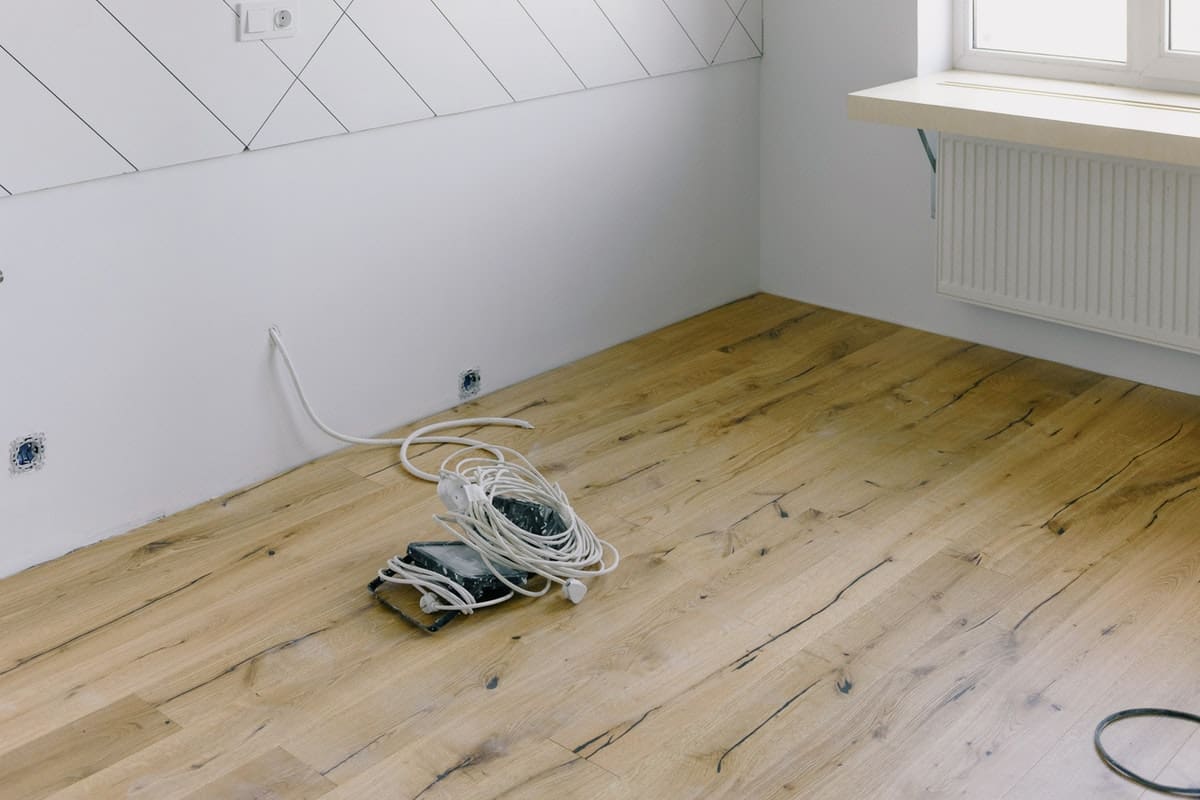Many of us really do not want to find Asbestos lurking in our homes or office buildings as it will prove to be so dangerous.
Knowing what it looks like is key to ensuring that an installation job, such as fitting in an underfloor heating system, goes smoothly and safely.
As there are so many products and materials that can contain Asbestos, it is worth finding out what it looks like and how it can be applied.
In this guide, we will look at what Asbestos looks like, a range of different types of applications, and why it is so important to identify the substance before you begin any home improvement project.
What Asbestos Looks Like
It can be difficult to identify Asbestos due to the sheer number of different ways it can be installed and how it is applied.
There are over 5000 different products that can contain the substance, and it could be something as simple as an Asbestos fire blanket which may (or may not) be identified by a label.
There are also certain types of Asbestos insulating board (AIB) to consider as well as thermal insulation, textiles, and even cement.
Asbestos can come in all sorts of sizes, shapes, and finishes so knowing what it looks like can prove exhausting.
This substance could appear fibrous or shiny on its own though when applied as panelling or pipe lagging, it can prove difficult to identify.
When Asbestos is damaged or used in a relatively small application it can prove exceedingly tricky to spot and would require a professional opinion.
The Different Types Of Asbestos Installations
Asbestos can be installed in several applications and appear in all sorts of places in your home.
This could be in the form of Asbestos insulating board and be found in any type of room or as thermal insulation to be used as pipe lagging.
If you do suspect that Asbestos has been applied in your home then consult a professional before you proceed with any home improvement jobs, including installing an underfloor heating system.
Asbestos Insulating Board (AIB)
Asbestos insulating boards can turn up in all sorts of rooms and places in your home. It is readily painted and could have an outer coloured finish.
This substance is also known as Asbestolux or simply insulating board. It can be used on windowsills, as pieces attached to the outside of a building, in ceiling tiles, and in several other applications.
Asbestos Sprayed Insulation
There are three main types of Asbestos used in Asbestos sprayed insulation. These include Chrysotile Asbestos which is white, Crocidolite which is blue, and Amosite which is brown.
Its main colours can vary from brown to white, pink and grey while containing other materials.
Asbestos Thermal Insulation
Another use of Asbestos is in thermal insulation and its content can range from just 6% to as much as 85%.
It can be used as pipe lagging, insulation, or caposite while its colours range from pink to brown, white and grey.
Asbestos Textiles

With an Asbestos content approaching close to 100%, Asbestos textiles can be concerning.
You should see it coloured white, and it can come in the form of a blanket, cloth, yarn, rope, or simply as a textile. As a rope, it can be used to wrap around a pipe to be used as insulation.
Asbestos Cement
The Asbestos content of Asbestos cement is typically only between 10 and 25% with the rest of the substance being cellulose and Portland cement.
It can come in the form of profiled sheeting, cladding, or panels and typically appears to be light and dark grey coloured. It can be applied anywhere you can expect cement such as on a roof, on a downpipe, or to affix an external building panel.
Asbestos Paper
This is a wholly Asbestos-based substance that mainly appears white or light brown. Asbestos paper can come in several products and finishes and was first manufactured in the 1880s.
Asbestos Vinyl
Asbestos vinyl typically looks like plastic floor tiles and linoleum. It is usually used with PVC and can appear in all sorts of colours when it is used as Chrysotile Asbestos.
Asbestos Decorative Coating
This is a particularly subtle application of Asbestos and can appear as a textured coating or paint finish which is also known as Artex or pebblecoat.
When used as a decorative coating, it is typically coloured white though can come in all different colours due to its decorative application.
Asbestos Resin
Also known as Bakelite or simply resin, this can appear white as Chrysotile Asbestos and brown as Amosite Asbestos. However, it mainly appears to be black and looks similar to hard plastic.
Why It Is So Important To Identify Asbestos
Asbestos has been used in so many construction products that it could turn up in various places inside your home or office building. It was initially used as it proved so cheap, strong, and provided sound insulation.
This is especially important to consider when performing any home improvement project, such as installing an underfloor heating system, as it can prove so dangerous.
The substance can prove fatal when breathed in and still kills around 5000 workers every year and around 20 tradesmen die on a weekly basis due to past exposure.
Asbestos can be found in any building or property that was built or refurbished prior to the year 2000. The primary concern is that when a material that contains Asbestos is damaged or disturbed in any way, fibres will be released into the air.
These may not be visible to the naked eye but when inhaled they can cause breathing-related conditions such as Mesothelioma, Asbestos-related lung cancer, pleural thickening, and Asbestosis.
Final Thoughts
If you are unsure whether asbestos is present while you are fitting an underfloor heating system then play it safe and ensure that you consult a professional.
The substance can look shiny as well as fibrous depending on what it was installed with and the original purpose of its installation.